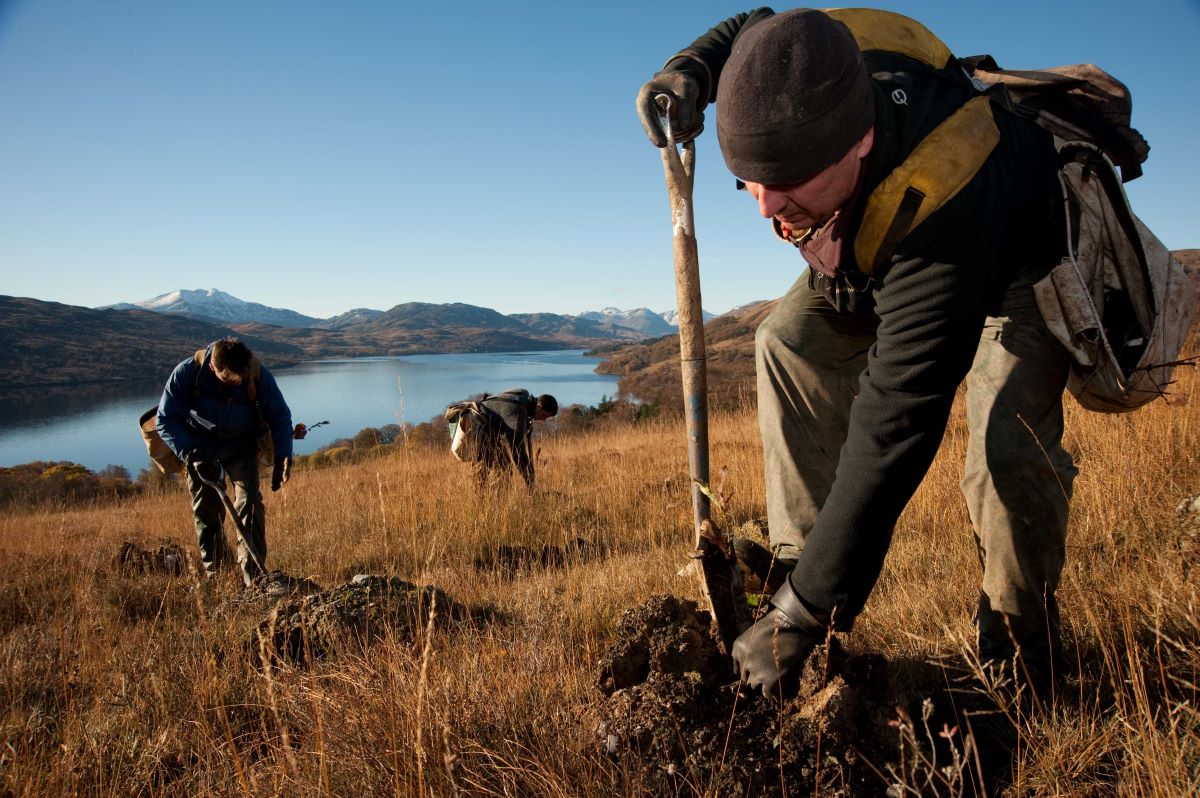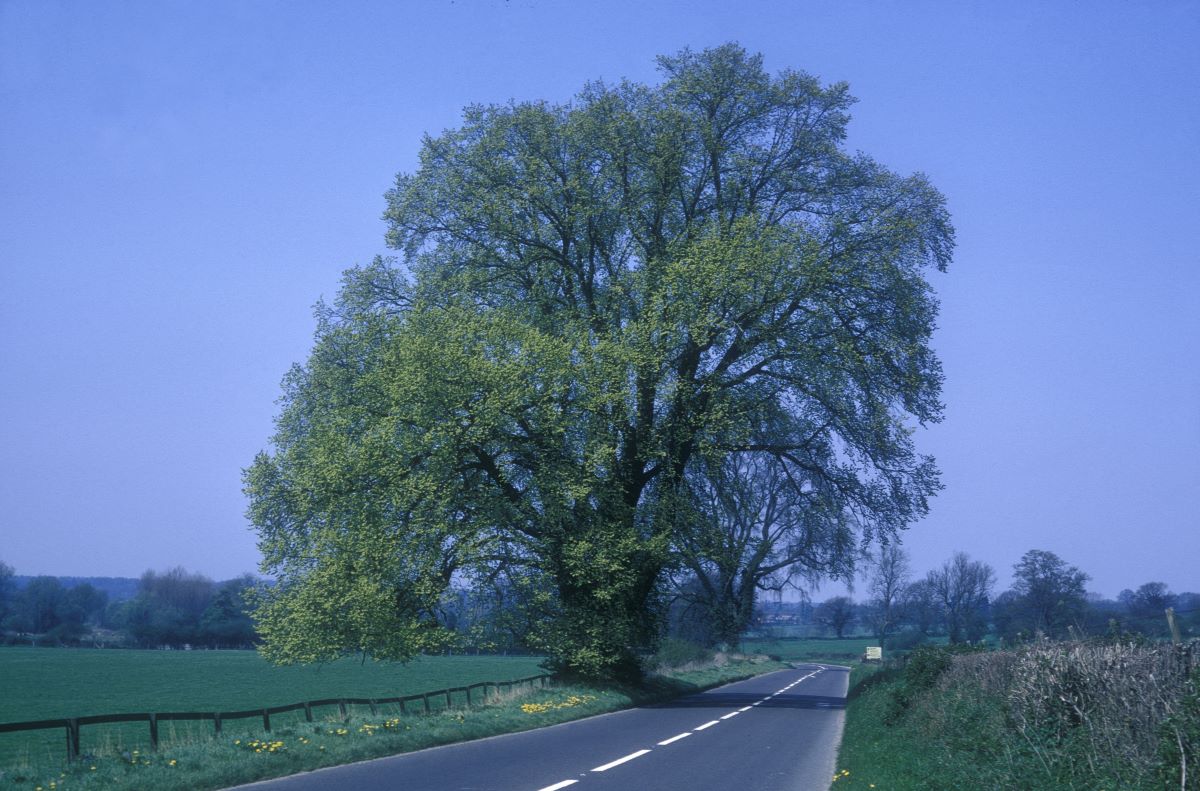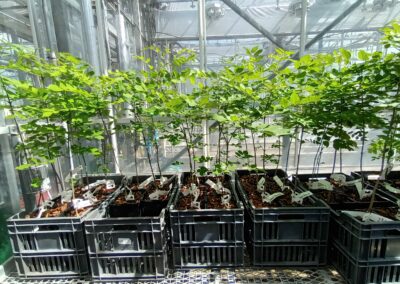Mapping attitudes and cultural connections to lost tree species and their restoration
Project leads Dr. Mariella Marzano I Forest Research; Prof. Richard Buggs I Royal Botanic Gardens, Kew; Dr. Rehema White, Fritha West (PhD student) | University of St Andrews
Collaborators N/A
Project status Active
Project funding £182,000
Research outcome Social acceptability of species restoration
Context
The loss of tree species has widespread ecological and economic consequences, potentially changing the form and function of existing and future treescapes. Such losses also potentially affect people, through diminished heritage and an altered sense of place. Cultural memory and meaning related to physical places can be lost and this in turn can affect concern for those places.
Restoring lost tree species to the treescape can generate positive psychological and cultural gains. It can support ecological goals and the benefits to humans of a restored ecosystem. However, pathways for tree restoration must be feasible socially and economically as well as technologically.
The process of breeding for plant disease resistance may incur other changes and a restored species may differ in habitat, provision, visual form or economic value. Resilient treescape planting could include genetically modified or edited plants or a change in the species assemblages. Consequently, certain practices may not be viewed as acceptable by society. The views of a variety of land managers are particularly important for the creation and planting of resistant treescapes, as these are the people who will decide whether or not to plant disease-resistant trees.
Research aims and objectives
Aim
This transdisciplinary PhD project will explore the feasibility, acceptability, and value of tree species restoration using the iconic elm (Ulmus) and ash (Fraxinus excelsior) as case studies.
- Explore the collective memory of elm and ash in the British landscape and assess how values, cultural heritage and place attachment are, or would be, impacted by their loss.
- Map awareness of, and attitudes to, different restoration approaches and social/economic/ecological factors influencing risk perceptions and acceptability of methods in different contexts.
- Understand land manager perspectives on restoring ‘lost/losing/will lose’ species.
- Contribute to policy and land manager decision-making on restoration choices for now and in the future in the context of forest and woodland creation and expansion.
Objectives
To understand social acceptability, benefits and risks associated with possible routes to restoration of large tree species. Three key themes will be covered:
- Acceptability – Which species restoration methods are preferred? Is planting of resistant trees more acceptable in some treescapes than others? What attributes do resistant elms/ash need to have? What are the barriers to the deployment of different restoration methods in different contexts? What are the risks and benefits of different approaches?
- Values, attitudes and experiences – How are treescapes and the species within them valued by stakeholders and wider society? What are stakeholder expectations in terms of restoration success?
- Decision-making – How has decision-making about tree species and treescapes changed over time? Where do tree species like elm belong? What form of awareness-raising and engagement is required to enable informed decision-making involving dialogue with stakeholders?
Expected outcomes
- A PhD thesis
- A policy brief informing decision makers of results and recommendations.
- Two academic papers will offer novel transdisciplinary findings to academic audiences.
- Conference presentations will ensure work aligns with existing interests and debates in practitioner and academic groups.
Further resources linked to this project
Journal Article: Social and cultural considerations for the restoration of ‘lost’ tree species: The fall and rise of elm
Journal Article: Social and cultural considerations for the restoration of ‘lost’ tree species: The fall and rise of elm
Abstract
1. Attempts to address biodiversity loss have led to ecosystem and species restoration efforts. Tree species restoration is particularly relevant because of increasing threats from pests and pathogens. However, there are different notions of ‘loss’, as well as sociocultural considerations, including social acceptability, which are often neglected in decision-making for restoration.
2. This paper explores concepts and meanings of ‘loss’, discusses sociocultural aspects and analyses social acceptability in relation to possible restoration routes for elm species in Great Britain (GB).
3. We identified different forms of ecological or species ‘loss’. For this paper, we recognise the following: Biological loss relates to biological extinction at varying scales. Functional loss refers to functional characteristics and traits of a species. Cultural loss refers to cultural connection, and societal loss refers to common utilisation and values.
4. Tree species such as field elm and wych elm have either radically transformed or have almost disappeared from large areas of GB since the 1960s, due to Dutch Elm Disease (DED). Biological presence continues, mainly in the form of small shrub-like trees, but functional, cultural and social loss continues through the decline of most large, freestanding elms. Some mature elms remain in refuge areas, especially in the north of Scotland where DED has not yet been recorded.
5. A range of restoration routes have been identified for elm in GB, from individual tree management or the creation of biosecure refugia, to the use of genetic technology. These options are each subject to different constraints, address ‘loss’ in diverse ways and face different levels of social acceptability, related in part to sociocultural connections.
6. We conclude that the following must be addressed to ensure socially acceptable routes to restoration: recognition of sociocultural considerations, trade-offs between public engagement and efficacy, absence of trust, lack of accessible information, evidence gaps, long-term funding and resources, and platforms for public dialogue. We emphasise the need for multiple notions of ‘loss’ and a shift to consideration of interlinked social, cultural and ecological regeneration as we forge new relationships and practices for tree health and sustainability.
Read the free Plain Language Summary for this article on the Journal blog.

Glossary & Key Terms
Ash (Fraxinus excelsior)
A native broadleaved tree with excellent timber properties that is an important host for many species of flora and fauna and consequently of high ecological value.
Ash is under severe threat from ash dieback disease (Hymenoscyphus fraxineus), and its abundance in the British landscape is likely to decrease. The ability to plant ash is now severely restricted due to concerns over tree health. Ash is categorised as a principal tree species. For more information, see Ash (AH) – Forest Research.
Diminished heritage
The loss or weakening of cultural, historical, and emotional connections that people have with specific tree species.
Elm (Ulmus)
A historically significant and culturally iconic tree species in the British landscape, which has suffered major decline due to disease, particularly Dutch elm disease caused by the fungus Ophiostoma novo-ulmi.
Species assemblage
The specific combinations of tree species found in a particular area, influenced by both environmental factors and interactions between species.
Share this project on social media
Related Projects
Our Partners
Social media
Explore
Newsletter
Contact
© 2022 Centre for Forest Protection. All rights reserved.


